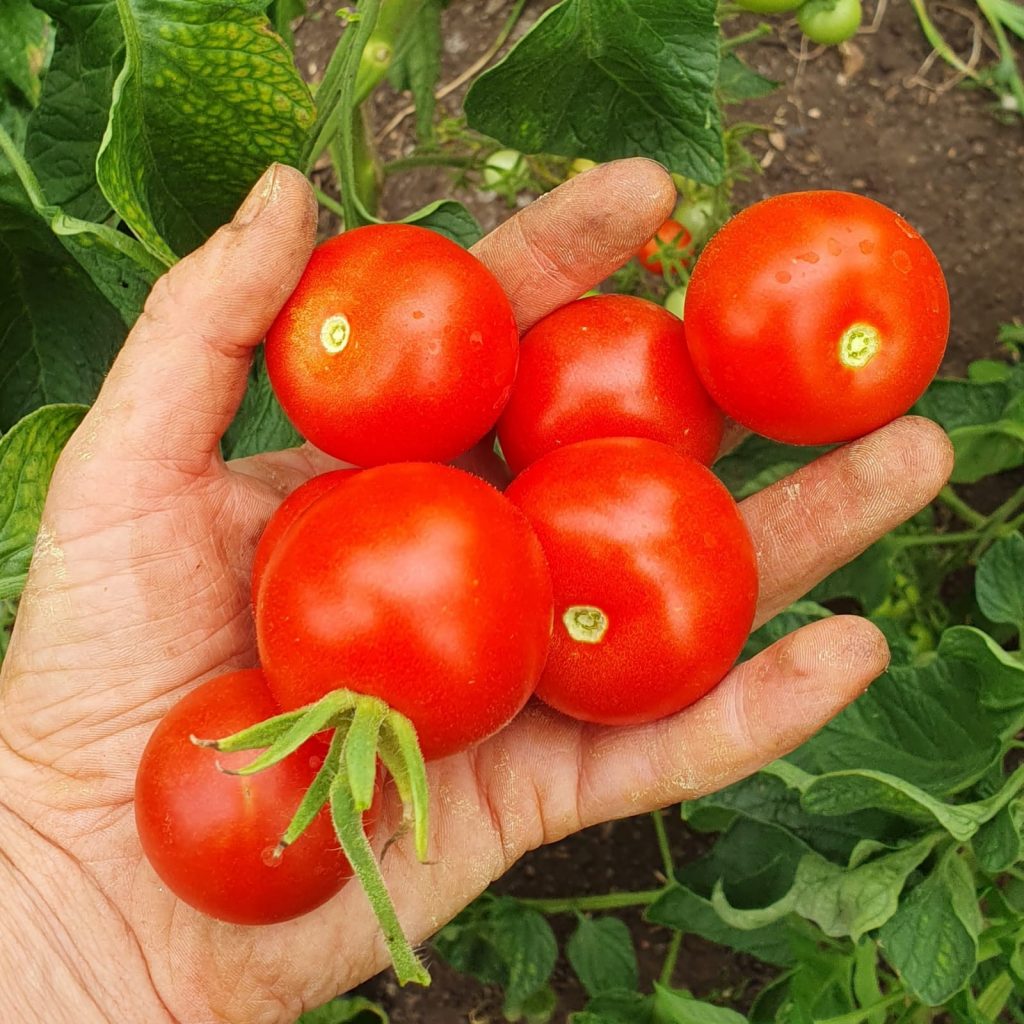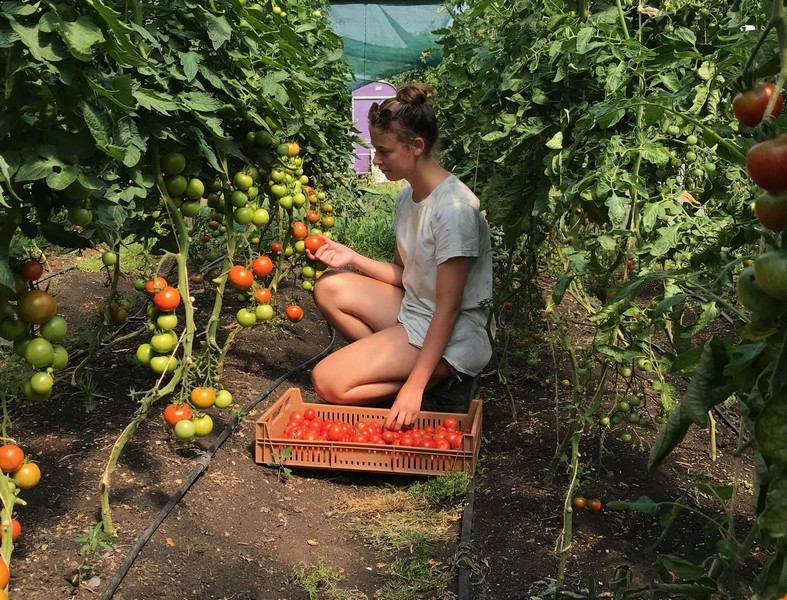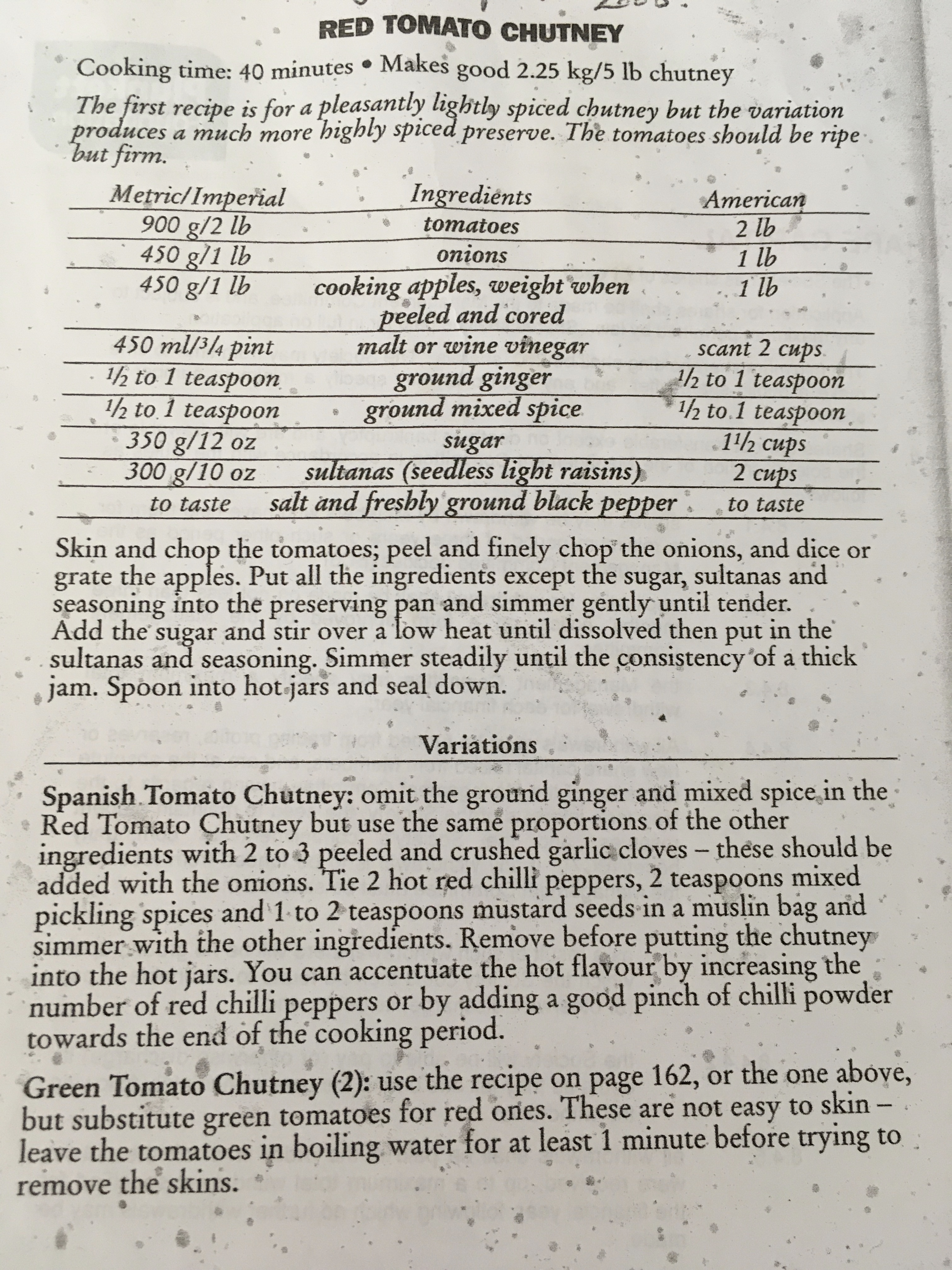Veg in the Spotlight: Tomatoes
Now that the tomatoes have really got their growing vibe on, we’re getting a significant share of the harvest each week. This is where preserving comes into its own, to allow you to enjoy a taste of summer into the colder months. You can use any type of tomato, and there’s a hack below for reducing the liquid in salad/cherry tomatoes to make them better suited to cooking. However it’s worth looking out for the slightly oval shaped ‘Quadro’ to include as part of your share (we do encourage everyone to take a mix of types/sizes) – it is particularly well suited to sauces and pastes, and is a bit less watery/juicy and more pulpy.



How to freeze (no blanching needed)
This simple method makes it really quick to freeze raw tomatoes, the skins can be removed easily after freezing and if you remove the liquid that comes out when they thaw it makes them better suited for cooking.
Another idea is to slow roast the cherry tomatoes you get and freeze them ready for a batch of risotto, soup or tomato sauce in the winter (no extra ingredients/water means they take up less space in the freezer).
Tomato sauce (can be frozen)
This recipe is an easy one for using plenty of tomatoes!
Tomato confit
This delicious sounding preserve extends the usability of your share of tomatoes as it will keep in the fridge for 2-3 weeks.
Greek briam
An oven baked version of ratatouille, Greek style.
Thanks to Erica Moody for these two suggestions.
Tomato skin powder
If you’re keen on an absolute zero waste approach in the kitchen, why not try making tomato skin powder from the skins you’ve taken off when making something else, to use as a seasoning. You can dry them in a low oven/put them in the oven after turning it off after each use. use a dehydrator, or even put them on racks on a sunny windowsill or in the sun in your greenhouse/conservatory/car. I found they dried well on a rack in my south-facing living room though haven’t yet had the time to convert them to powder for seasoning.
The book that makes a fantastic resource for this glut is How to Store Your Garden Produce: The key to self-sufficiency by Piers Warren. The 2008 edition has instructions for freezing, drying, bottling, juicing and recipes for several different preserves including the unusual ‘tomato butter’ (contains no butter) – a spiced and sweetened preserve. I did make it once, but decided to save my preserving energies for other things! It’s available cheaply, secondhand from online booksellers including World of Books and ABE books.
Drying (adapted from the book): dry in an oven, dehydrator, or if there’s very hot weather on a sunny windowsill/in a greenhouse/conservatory/car. Cut in half, tip off excess juice/liquid, lay on a drying rack (they probably need to sit on a plastic mat/mesh/rack as the acidity might not be great on a normal kitchen cooling rack) and sprinkle with a little salt. The drying process can take up to a day. For storing in a jar, remove when they feel firm and dry. For storing in oil, remove when still a little squishy, pack into sterilised jars and cover with oil before sealing. The book reckons you can keep them for up to 6 months stored in this way.
Here’s a recipe online for oil stored dried tomatoes. You can find others for drying tomatoes – mostly American though.
Juicing: If you have some kind of a juicer, tomato juice will keep for a day or two in the fridge. For longer enjoyment, put juice into freezer bags/zipbags and pack into empty tetrapaks. This way, once frozen they will stack neatly in the freezer without the carton.
And finally, tomato chutney is a great way to enjoy the flavours of summer months into the future. I find chutney generally keeps well for a year or more (I’ve eaten a good chutney 2-3 years after making and it’s still delicious). If you’ve never ventured into chutney making before, it’s an easy preserve to start with. The key things to be aware of are:
– follow the recipe approximately (ie. don’t double the recipe as this makes cooking it enough more of a challenge) – quantities can be flexed according to what you have but it’s a good idea to maintain about the right amount of produce for the quantity of sugar/vinegar
– be sure to cook it until a spoon drawn through it leaves a trail that doesn’t disappear immediately – getting impatient with this step will either cause it to catch and burn on the bottom of the pan due to too high a heat or have a consistency that hasn’t pulped down properly and has too much liquid. This in turn might make it not keep as well due to the ratio of vinegar in particular
– sterilise your jars in the oven at 160 deg C or until thoroughly dry (and lids, though they don’t tolerate the oven as well, so boiling may be better or a shorter spell in the oven)
Here’s a much used tomato chutney recipe from the book Basic basics, given to me years ago by Canalside founder, Tom Ingall.

If you try any good recipes that other members might enjoy, why not share them on the Facebook group?
 Newer post:
Newer post: Older post:
Older post: